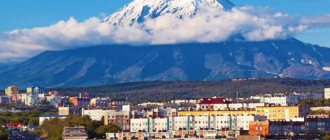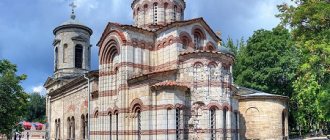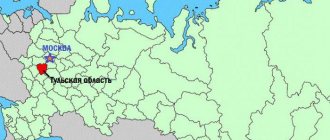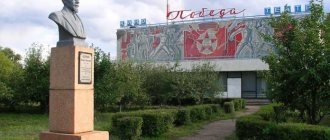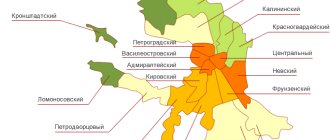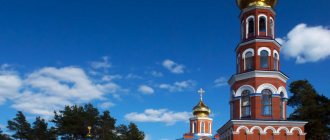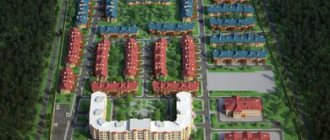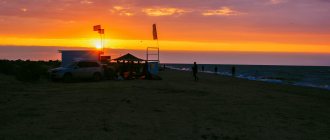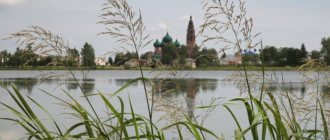Russia \ Adygea \ Cities and villages
Mountainous and forested Adygea cannot boast of a high population density, huge cities or an abundance of villages, towns and villages. The largest city, the capital of the republic, Maykop, with a population of about 150 thousand people, can hardly be called a metropolis. However, despite some interesting sights, as a rule, other settlements attract tourists.
First of all, the village of Kamennomostsky, located surrounded by numerous natural attractions. Even further, on the border with the Caucasian State Reserve, Guzeripl is located. It is also worth paying attention to small settlements, often adjacent to some attractions. For example, the village of Pobeda near the St. Michael’s Monastery or the village of Dakhovskaya, the village of Khamyshki and other villages.
What holiday is it today?
December 16, 2021, Thursday
Today are holidays, events: Events that happened on December 16 in the world, in different years Tomorrow: Day of Strategic Missile Forces Day of Employees of the State Courier Service Memorable date in the military history of Russia: Capture of the Ochakov fortress in 1788
Today is the Orthodox holiday of the Prophet Zephaniah. Reverend Savva of Storozhevsky, Zvenigorod. Martyr Angelis... Tomorrow: Great Martyr Barbara and Martyr Juliania of Iliopolis. Venerable John of Damascus...
Today is a national holiday: Day of World Silence and Silence... Tomorrow: Barbarian Day...
Seasons
Seasons, four periods of the year (spring, summer, autumn and winter) characterized by certain average temperatures. The period during which the Sun passes through one of these sectors is called the season. Spring in the Northern Hemisphere and autumn in the Southern Hemisphere begin when the Sun passes through the initial circle of declination and its right ascension is 0° (vernal equinox). Summer in the Northern Hemisphere and winter in the Southern Hemisphere occur when the sun's right ascension is 90° (summer solstice). Autumn in the Northern Hemisphere and spring in the Southern Hemisphere begin when the sun's right ascension is 180° (autumnal equinox). The beginning of winter in the Northern Hemisphere and summer in the Southern Hemisphere is considered to be the winter solstice, when the direct ascension of the Sun is 270°... Next: Seasons. Russian folk calendar. Monthly words...
Folk calendar about every day
Every day one season always replaces another and this determines a person’s way of life. In connection with this, a folk calendar was formed in which there were practically no nameless, unmarked days. Every day was special, had its own purpose. All this was determined by climate conditions and astrological phenomena.
A calendar is a system for counting periods of time. The first calendars arose a long time ago, in ancient times, because there was a need to measure time. The word calendar comes from the Latin words caleo - to proclaim and calendarium - debt book. This is due to the fact that in Ancient Rome the beginning of each month was especially proclaimed, and because it was customary to pay debts on the first day of the month. Different peoples counted time differently. Some calendars are based on the changing phases of the moon - lunar calendars; in others - the change of seasons - sunny; in others, the length of the year was coordinated with the change of seasons, and the counting of months was associated with the phases of the Moon. Such calendars are called lunisolar.
In Rus', the calendar was called a monthly calendar. Every day, the month book covered the entire year of peasant life, “describing” day by day, month after month, where each day had its own holidays or weekdays, customs and superstitions, traditions and rituals, natural signs and phenomena. The cyclical nature of the calendar is reminiscent of human life, where spring is youth, summer is heyday, autumn is the time of harvesting fruits (it’s good if there are some, otherwise you can live your life without collecting fruits), winter is the time of wisdom and peace. This cyclicality and rhythm determined the way of life of the farmer. The folk calendar was an agricultural calendar, which was reflected in the names of the months, folk signs, rituals and customs. Even the determination of the timing and duration of the seasons is associated with real climatic conditions. Hence the discrepancy between the names of the months in different areas... Next: Folk calendar...
Resorts of Adygea, where it is better to go
Adygea is a unique resort region, known primarily for its natural resources. Despite the fact that holidays in Adygea are not yet as popular as in the neighboring Krasnodar Territory, the local tourism infrastructure is actively developing every year. Adyghe nature is represented by rich forests, occupying more than a third of the territory of the republic. The real pearl of the resort Adygea is the mountain ranges. They are reached by endless plateaus with alpine meadows where herds of horses graze. Summer is considered the high tourist season, but you can have a good rest in the Republic of Adygea at any time of the year. If you have been planning to visit this hospitable region in the south of Russia for a long time, take note of the best resort vacation spots in Adygea.
Tourist Adygea: brief information
The Republic of Adygea is located in the south of Russia and is surrounded on all sides by the territory of the Krasnodar Territory. This is a relatively small resort region, in which there are only two more or less large cities - the capital Maykop, and Adygeisk. The rest of the territory is located in numerous villages, where tourists go on vacation. The starting place for many tourist routes and excursions is Maykop. You can get to it by bus from Krasnodar (travel time – 2.5 hours). In addition, the capital of Adygea has direct bus connections with other Russian cities, including Moscow. If you want to relax in an all inclusive format (including travel to your vacation spot and accommodation), book a tour with one of the travel organizers in Russia.
When is the best time to go on vacation to Adygea?
Mount Oshten
- Summer is the high tourist season. On the plain, summer weather sets in at the beginning of May and continues until the end of August. Adyghe summer is warm and soft. Short-term warm showers are possible.
- Golden autumn is a velvet season with warm, dry and sunny weather. In the second half of September, the blessed “Indian summer” begins. This time is well suited for a peaceful emotional detox in the best vacation spots in Adygea.
- Winter has little snow and is quite mild. Quite unstable weather prevails with transitions from frosts to prolonged thaws. On the Lago-Naki plateau at this time you can go skiing and sledding.
- Early spring is another feature of the Republic of Adygea. In many places, the tourist season begins as early as April.
Fishing calendar for every day
The fishing calendar should not be taken as an absolutely indisputable truth. Fish biting is greatly influenced by a whole range of natural factors, as well as the influence on the nature of man himself. You must not forget that the fish’s bite depends and is determined not only by the calendar dates and biological cycles of their life, reflected in the calendar, but also, no less, by the state of their habitat; the bite also depends on weather conditions: air and water temperatures, cloudiness, wind direction and strength, etc... Next: Fishing calendar...
What to do in Adygea
Horseback riding tours are very popular in Adygea.
People come to Adygea for active recreation, natural beauty and medical procedures. The Adyghe Mountains are very popular - they are included in the UNESCO World Heritage List. There are many tourist routes of varying levels of difficulty in the Caucasus Nature Reserve. Local waterfalls, caves, forests and mountain rivers are also impressive.
Extreme sports are represented in the republic in different forms:
- Canyoning;
- rafting;
- hang gliding;
- horseback riding;
- mountaineering;
- skiing.
But first of all, tourists are interested in thermal springs. The vast majority of them are located on the territory of tourist complexes, but there are also freely accessible sources.
Orthodox calendar about every day
Orthodox calendar: Orthodox, Church and Christian holidays.
The church year is an alternation of weekdays and holidays. On weekdays, a person is called to work “by the sweat of his brow to earn his bread.” Holidays are given in order to feel liberation, to rise above the bustle and routine of the world, to feel involved in the highest of worlds, “where there are no illnesses, sorrows and sighs, but endless life.” Since ancient times, holiday cycles have been associated with the seasons. The pagans associated them with the worship of the forces of nature, the cult of which in the Old Testament was replaced by gratitude to the Creator for the universe. And although the connection between holidays and the seasons has not completely lost its power, since God is present in everything, in the plant and animal world, in human works, it nevertheless faded into the background, giving way to a spiritual foundation built on the Sacred Scriptures. The history of Orthodox holidays dates back to the times of the Old Testament. Each of the Orthodox holidays is dedicated to the remembrance of the most important events in the life of Jesus Christ and the Mother of God, as well as the memory of saints... Next: Orthodox calendar...
Kamennomostsky (Hadzhokh)
The village of Kamennomostsky is located in Adygea, on the banks of the Belaya River, south of Maykop (26 kilometers south of the village of Tulsky). During the Russian-Caucasian War, on the territory of the modern village there was the Adyghe village of Khodzhiko, famous for its long defense under the leadership of Shamil against Russian troops. In 1862, a Cossack defensive post was erected on the site of an aul devastated in battle. Two years later, the village of Kamennomostskaya was founded in its place, and in the period from 1873-1914. The village acquired the status of a village.
Subsections:
Attractions How to get there Trip reports Leisure
Russian folk calendar for every day
The word “sign” comes from the word “notice”, i.e. observe. As a result of observing what happens around a person every day, he accumulates life experience. This knowledge was passed down from generation to generation, carefully preserved and people trusted it as a sacred book. Many signs have come to us from the depths of centuries without losing their knowledge. Each of us is free to choose: to dismiss all this as an absurd superstition or to take a closer look at the signs and take the centuries-old experience of generations more seriously. Most of us, when taking exams, ask them to scold them, boasting about some kind of good fortune or luck, spit so as not to jinx them or knock on wood, take a detour if a black cat crossed the road, are afraid of the number 13 and much more. And who among us does not have lucky things, numbers? Who has never resorted to the help of fate at least once in their life, who has not believed in secrets? It’s as if everything connected with signs is hidden somewhere deep in our subconscious. Often we remember them mechanically, unconsciously, or just as a joke. But, undoubtedly, the signs contain a lot of accurate knowledge and practical wisdom of our ancestors. They cover all the characteristic, often difficult to perceive, natural phenomena. Signs have preserved a lot of what was in old folk holidays and customs; they help predict the weather, grow crops... Next: Folk signs...
How to get to Adygea
The Maikop - Guzeripl highway is the main tourist road of Adygea.
The Republic of Adygea can be reached in several ways:
- Airplane . The best option. The nearest airport is in Krasnodar; the flight from Moscow is just over two hours. You can get to Maykop from Krasnodar by bus in an hour and a half.
- Car . You will have to travel 1,400 km along the M-4 Don highway from Moscow to Maykop. Minimum time is 16 hours. How much it will increase depends on the number and duration of stops along the way.
- Train . From Moscow and St. Petersburg you can get to Adygea by train only with a change in Tuapse. The journey from the capital will take just under 36 hours.
Holiday calendar, dates and events of the year
All state and professional holidays in Russia, including significant World and International holidays, and other equally interesting holidays and events about every day.
The holiday has always kept pace with the history of mankind. Social time can be divided into three types: everyday life (weekdays), weekends and holidays. Everyday life is a series of practices repeated day after day and every day (work). Weekends are regular breaks from the rush of everyday life. It is believed that on weekends a person should restore his strength after working days. Day off, non-working day. A holiday is a day of celebration established in honor or in memory of someone or something. A day or series of days celebrated by the church in memory of a religious event or saint... Next: Calendar...
Administrative division
Home/About the Republic/Administrative division
- Basic information
- Symbolism
- Population
- Administrative division
- Maykop
- Adygeisk
- Giaginsky district
- Koshekhablsky district
- Krasnogvardeisky district
- Maykop district
- Takhtamukay district
- Teuchezhsky district
- Shovgenovsky district
loading map...
And about.
Head of the municipality Stelmakh Sergey Vitalievich Address: 385000, Maykop, st. Krasnooktyabrskaya, 21 tel. website: https://maikop.ru/ e-mail: [email protected]
The oldest traces of humans in the vicinity of modern Maykop date back to the Lower Paleolithic era. It was then that the ancestors of the indigenous population of Adygea came here - the Adygs (Circassians), known in history under the names of Meots, Sinds, and Kerkets. In the middle of the 1st millennium BC. e. they lived along the eastern coast of the Azov and northeastern coast of the Black Sea, as well as in the lower reaches of the Kuban River. In the 1st-3rd centuries AD. many Adyghe tribes mixed with the Sarmatian ones, together with whom they were pushed back into modern territory by the Goths in the 4th century. In the IV-X centuries AD. e. The Circassians were engaged in agriculture and cattle breeding, fishing, beekeeping, metal processing and pottery, traded with the Crimea, Byzantium, the Slavs of the Dnieper region, the Khazars and Iran.
From about the 13th century. The main occupation of the Circassians became livestock farming, in the lowland parts - farming, in some areas they were engaged in fishing and beekeeping. Crafts also developed - jewelry, pottery, copper smelting, blacksmithing, etc. In the 13th-15th centuries, the Circassian economy was mainly of a subsistence nature.
Merchants of the Genoese colony cities, located in the coastal part of Circassia and which existed until the end of the 15th century, traded with the Circassians. The main share in it was occupied by honey, wax, fruits, caviar, furs, which were exchanged for salt, fabrics, weapons and luxury goods.
On May 17, 1857, a Russian fortress was founded on the right bank of the Belaya River, later surrounded by a ditch and a high rampart. In 1858-1863, at the final stage of the Caucasian War (1817-1864), the fortress was an important military-strategic point in the Trans-Kuban region, necessary for the conquest of Circassia. In 1864, after the war, the territory of modern Adygea was finally annexed to Russia and became part of the Kuban region.
In 1870, by Decree of Emperor Alexander II, Maykop became a district city, military administration was abolished and in 1878 city status was introduced.
From that time on, the commercial and industrial development of the city began. By the end of the 19th century there were: 121 stone and 5340 wooden houses, 5 Orthodox churches, a synagogue, a city school, a three-year city school, 2 primary schools for men and 1 for women, 2 private schools, 2 pharmacies; plants, factories and other industrial establishments - 112, incl. 50 cooperage, 13 brick, 8 pottery and iron foundries, 24 oil mills, 6 water mills, etc. Cattle breeding and tobacco growing were developed. According to the 1st All-Russian Population Census of 1897, 34.2 thousand people lived in the city.
In 1911, academician I.M. Gubkin discovered rich oil deposits southwest of Maykop, which played a big role in the development of the city’s economy. Foreign, mainly English, companies were engaged in the extraction and processing of raw materials.
In March 1920, after the defeat of the “Armed Forces of the South of Russia” under the command of General A.I. Denikin and the Cossack Kuban Army, in the Kuban and in Maikop, occupied by the 1st Cavalry Army S.M. Budyonny, Soviet power was established. On July 27, 1922, the Circassian (Adyghe) Autonomous Region was formed on the territory inhabited by the Circassians, which was renamed a month later into the Adyghe (Circassian) Autonomous Region, and in July 1928 - into the Adyghe Autonomous Region. The center of autonomy was Krasnodar, and since 1936 - Maykop. The formation of autonomy had a beneficial effect on the cultural development of the people, especially with the creation of writing and the appearance of printing in the Adyghe language, and the development of national theatrical art. In 1939, 56 thousand people lived in the city.
During the Great Patriotic War, Maikop was occupied by Nazi troops from August 10, 1942 to January 29, 1943. It was liberated by the troops of the Transcaucasian Front. Despite significant damage, the city was completely restored within 5 years.
General information
Maykop is the capital of the Republic of Adygea, its administrative, economic and cultural center. Over the years of the existence of Adygea as a territorial-state entity (1922), Maykop from a small town (45 thousand people) grew into a modern city with a population of almost 170 thousand people.
The municipal formation "City of Maykop" includes the following settlements: the city of Maykop and rural settlements - x. Kosinov, H. Gaverdovsky, H. Vesyoly, village Zapadny, village Podgorny, village Rodnikovy, village. Northern, st. Khanskaya. The territory within the boundaries of the municipality is 28.2 thousand hectares, or 3.6% of the territory of Adygea. The population of the city is 167.7 thousand people, or 37.7% of the population of the republic, of which 86.3% belongs to the urban population and 13.7% to the rural population.
The city of Maykop is located in the center of the Republic of Adygea, at the northern foothills of the Caucasus Range, along the left and right banks of the river. Belaya (tributary of the Kuban). The name “Maikop” comes from the Adyghe word “Myekkuape” - valley of apple trees. And in the semantics of the city coat of arms, one of the symbols was the image of apple tree leaves.
Maykop is one of the most beautiful cities in the North Caucasus. What makes it so is the wide streets, as if drawn along a line, the generous greenery of trees and shrubs, numerous squares, public gardens and a picturesque park above the Belaya River. Summers here are warm with an average July temperature of +23 degrees, winters are mild with an average January temperature of -1.7 degrees. The main wealth of the republic - its forests - are located in the mountains of the Maykop region.
Almost the entire industry of the Republic of Adygea is concentrated in modern Maykop. The city's economy is a diversified economy and includes 13 main types of activities. The main sectors of industrial production are: manufacturing, mining, production and distribution of electricity, gas and water. The traditional industries in the city are: food, pulp and paper and woodworking industries, mechanical engineering and metalworking, the products of which are in stable demand on the domestic market.
In the field of production, the most famous enterprises are JSC Kartontara, LLC, CJSC Dairy Plant "Adygeisky", JSC Reduktorny, JSC Mash, LLC TD "Victoria", LLC "Piteiny Dom", LLC MPK Piv, CJSC Twine Factory "Maikopskaya" .
Three enterprises invest in the production of innovative goods, works, services and ship innovative works - these are Kartontara JSC, Adygeisky Dairy Plant CJSC and Mash OJSC.
The city of Maykop is the largest transport hub of the republic. The capital of Adygea is separated from Moscow by 1,400 km. The nearest seaport is Tuapse, located 150 km from the city of Maykop. The city has an extensive network of asphalt roads and a railway line.
In 1910, a railway line was built from the large Belorechenskaya railway station to the city of Maykop. In 1930 it was extended to the Hadzhokh station. Currently, timber and building materials are transported along this road. A network of good asphalt roads connects the city of Maykop with all populated areas of the republic, which allows for mass transportation of agricultural products, industrial goods and the transportation of passengers both within the republic and abroad. Suburban electric trains deliver passengers to the Black Sea coast - Tuapse, Sochi, Adler. It is planned to open the Maikop airport for international communications, which will provide an opportunity to establish direct connections with the business world and create free customs warehouses in the republic.
Maykop has a developed social infrastructure. In 1860, the first mountain school was opened in the city. Today in the city there are 32 secondary schools, a republican gymnasium, the Adyghe State University, the Adyghe Republican Institute of Humanitarian Studies, Maikop State Technological University, pedagogical, music, medical and many other vocational schools and colleges.
The city is known throughout the world for archaeological excavations at the end of the 19th century, during which scientists N.I. Veselovsky discovered the Maikop Mounds of the Bronze Age. Precious vessels were found in the burial of the tribal leader, which are now on display in the Hermitage.
In 1925, a regional museum of local lore was created, with the participation of Hermitage scientists and employees of the State Historical Museum in equipping it. Currently, the exhibitions of the National Museum of the Republic of Armenia include more than 70 thousand exhibits. The museum has a rich collection of folk applied art, including unique collections of gold embroidery, silver coins and daggers. 7 state and 21 public museums have been opened.
The city has a large number of professional and amateur artistic groups - the State Academic Folk Dance Ensemble of Adygea “Nalmes”, the State Folk Song Ensemble of Adygea “Islamey”, municipal ensembles “Zori Maikop” and “Kazachata”, etc. There are two drama theaters (national and Russian), Philharmonic Society, Chamber Musical Theatre, National Museum and the North Caucasus branch of the State Museum of Oriental Arts. Branches of the unions of writers, artists and journalists of Russia operate here.
Maykop is increasingly becoming a venue for cultural regional events. Since 1993, the International Festival of Adyghe Culture has been held here, the “Peace to the Caucasus” festivals, the “Azish-Tau” art song festival and many others have been held here.
The city center is formed by Friendship Square with the Friendship monument (1968), dedicated to the 400th anniversary of the Circassian union with Russia, and Lenin Square with a complex of government buildings.
Among the large historical and administrative buildings of public importance and interest for city guests, one can highlight: the Government House of Adygea, the Maikop Hotel, the House of Officers, the House of Justice, the National Museum, the North Caucasus branch of the Museum of Oriental Arts, the Nalmes concert hall, State Philharmonic, Palace of Culture "Giant".
There are other monuments in the city: the Central Memorial and the “Eternal Flame”, the monument in honor of the excavations of the Oshad mound, the “Soldier’s Spring” monument. On the northern outskirts of the city, a memorial was created on the mass graves of 4 thousand Red Guards who died in September 1918, and Black Sea sailors who carried out the first airborne landing during the Great Patriotic War in 1942. On Kurgannaya Street, the place where the Oshad mound was excavated is marked with a small monument. Valuable finds are exhibited in the Hermitage.
In recent years, many university buildings, large stadiums and other sports facilities have been opened in the city. There is also a large recreation area in the city - along the river. Belaya stretches the Park of Culture and Recreation with an outdoor swimming pool, an artificial beach, areas for recreation and physical training.
The surroundings of Maykop, primarily the Belaya River gorge, attract tourists with the beauty of nature and numerous attractions. In the village of Shuntuk in 1929-1938. The famous botanist, academician N.I. Vavilov lived and worked. Nearby, in the village of Podgorny, there is the Adygea Scientific Research Institute of Agriculture, created on the basis of the Vavilov experimental station. In the upper reaches of the Belaya River is the Caucasian State Reserve, established in 1924. The main area of the reserve and its center, Guzeripl, are located on the territory of Adygea. Not far from Maykop are the main tourist sites of the republic - the Khadzho Gorge, Rufabgo waterfalls, the Lago-Naki plateau, various canyons, gorges, and caves.
Prayer book, Orthodox prayers for every day
Prayer is the most powerful means for healing all illnesses - both physical and mental. Prayers can be laudatory or grateful, petitionary and repentant. If we have offended God, sinned, we must ask Him for forgiveness, that is, repent. Such prayers are called repentant prayers. If everything is fine with us, if we and our loved ones are healthy and prosperous, if we have a place to live, something to wear, something to eat, we must glorify and thank God for this. Such prayers are called praise or thanksgiving. If some misfortune, illness, trouble or need happens, you need to ask God for help. Such prayers are called petitionary... Next: Orthodox prayers...
Cities and villages
Maykop
Maykop is the capital of Adygea, whose name translated from Adyghe means “valley of apple trees.” There really is a lot of greenery there, especially in Central Park, where, in addition, there are two attractions of the city - a singing fountain and a public swimming pool.
A detailed overview of the sights of Maykop.
There are many architectural monuments in Maykop: the “Unity and Harmony” monument, the “Friendship” composition, the memorial to war heroes, the Oshad mound. Tourists can visit the local history museum, the Maikop Cathedral Mosque and the Church of St. George the Victorious, the Holy Trinity and Holy Assumption Cathedrals, and St. Nicholas Church.
In the city you can try the famous Adyghe cheese and beer, which is brewed at the city brewery.
Adygeisk
Adygeisk is the second largest city of the republic, which was built under sad circumstances. During the construction of the Krasnodar reservoir, farmsteads and auls were flooded - a village was built for their residents, where a monument to settlements that disappeared from the face of the earth is still preserved.
Tourists can visit the Museum of Local Lore, the city mosque and monuments to those killed during the Russian-Caucasian and Great Patriotic Wars.
Krasnooktyabrsky
The village of Krasnooktyabrsky was once a small farm where cavalrymen lived who guarded the approaches to the legendary Maikop fortress. Over the course of several hundred years, its population has grown to 6 thousand people and continues to grow.
The route to the Khadzhokh Valley and the St. Michael's Monastery, the largest attractions of the region, runs through it. Near Krasnooktyabrsky there is a chapel of St. Nicholas the Wonderworker and a monument to the saint.
Zodiac, astrological, eastern calendar. Zodiac signs
In ancient times, to establish the calendar, priests used knowledge of the positions of all the planets. Before the reform of Peter 1, the New Year was celebrated on the Day of the Autumn Equinox. On this day, according to ancient legend, the most peaceful treaty was concluded between the Great Race (ancient Slavs) and the Great Dragon (ancient Chinese) and it was approximately 7518 years ago... For the ancient Slavs, the calendar month corresponded to the lunar cycle from new moon to new moon, taking into account such Thus, the relationship of the entire annual cycle with astronomical and natural phenomena. There was no coherent calendar system. The main natural phenomena are still considered to this day to be the days of the solar equinox and solstice - the Slavic holidays Maslenitsa, Kupala, Ovsen and Kolyada. But during the time of Peter 1, all ancient Slavic calendars were abolished and a new Western European calendar from the Nativity of Christ (Julian calendar) was introduced, while the beginning of the calendar was moved to January 1. The Julian calendar (old style) did not take leap days into account and accumulated one extra day every 128 years. After the October Revolution in 1918, the Gregorian calendar (new style) was introduced in Russia, according to which an amendment of 13 days was introduced. The calendar of the ancient Slavs was based on two planets: the Sun and the Moon. And now they don’t use anything at all. The calendar has become static. There is no such thing as the calendar, it turns out, resting on some planet. Nobody even knows about it. There are just some standard numbers, there are months and holidays. The calendar is based on the Sun and Moon. Why is this so? Because these two luminaries influence the Earth. The Earth revolves around the Sun, and the Moon revolves around the Earth. And these two luminaries create the atmosphere on the planet. From here the calendar is built... Next: Astrological calendar...
Thermal springs are freely accessible
In Adygea there are unequipped hot springs, access to which is open. It is their waters that are used mainly by Adyghe people. You need to ask local residents you meet nearby about the exact location of the “wild” springs. They are not marked on the maps, and we can only give approximate directions.
- Near the village of Tulsky, on the other side of the railway tracks.
- Between the villages of Nizhegorodskaya and Krasny Dagestan, on the border with the Apsheronsky district of Kuban. The water accumulates in the ditch, where it cools to a comfortable 40C.
- Slopes near the village of Tsvetochny near the territory of the Institute of Floriculture.
However, such thermal springs are more suitable for one-time use. It is difficult for tourists to undergo a course of treatment, unless they rent a house in the nearest village.
Dream books online, interpretation of dreams
A dream book is nothing more than an interpreter of dreams and dreams, a translator of dreams. Since ancient times, people have been using dream books; dreams have always been given great importance, and people have often noticed the prophetic properties of some dreams. The dream book can become your faithful assistant every day and throughout your life, thanks to the dream interpreter you can always make the right decisions, the dream book will help you resist temptations in time, and will warn you against wrong steps and frivolous actions. Further…
Gender and age
As of 2021, the population is distributed by gender and age as follows:
- Men of all ages – 211,693.
- Women, regardless of age – 241,673.
- Boys and young men under the age of 15 – 45,093.
- Girls and young women under 15 years old – 42096.
- Working age males – 131,314.
- Working age females – 120,254.
- Men over working age – 35,286.
- And women, respectively – 79323.

